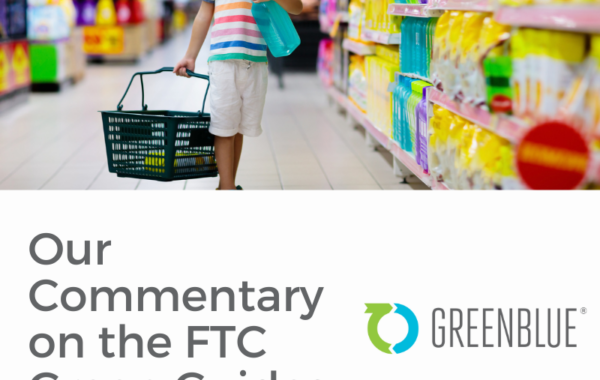October 23, 2020
The recent report Breaking the Plastic Wave by The Pew Charitable Trusts and SYSTEMIQ sent reverberations throughout the sustainable packaging community. Once the topic of marine plastic pollution entered the spotlight around 2015, the sustainable packaging community scrambled to understand what it is and how it happens. Learnings from The Ocean Conservancy, The Ellen MacArthur Foundation, and UGA’s Jenna Jambeck armed us with new talking points. Highlighting that plastic in the ocean tends to originate as mismanaged plastic waste on land, how there will be more plastic than fish in the ocean by 2050, that only ten rivers are responsible for over a quarter of plastic in the ocean, and lastly, how a majority of marine plastic pollution comes from southeast Asia. New narratives emerged about recycling as a mitigating force, while visceral reactions from activists and policymakers led us to a continuing wave of bans on plastic items, and the strange new world of “marine biodegradable” claims and certifications emerged.
Amidst all the efforts to address marine plastic pollution, which have ranged from sincere, to greenwash-y, to unabashed finger-pointing, few paused to reflect on the idea that we had yet to generate a scientific understanding of what actually should be done to solve the problem. Breaking the Plastic Wave provides exactly that, and for the first time, we have a genuine roadmap to abating marine plastic pollution. That’s why I was so excited to hear from SYSTEMIQ’s Yoni Shiran at Virtual SPC Advance and learn more about their research. Yoni took the audience on a virtual tour through the main learnings of Breaking the Plastic Wave, and left me with three big takeaways.
1. We CAN mitigate marine plastic pollution, and we can do it fairly soon.
The sustainability community exists to address big, complicated, global issues, and unfortunately it’s challenging to generate big, complicated, global solutions. Too often we hear doom and gloom about the next toxic substance, the next effect of climate change, or the next resource shortage, and for all the energy spent explaining the problem, the answer to it is a bunch of hand waving and repeated use of the word “innovation”, which, by its very definition, is a euphemism for “we don’t know what the solution is but we’re gonna figure it out sooner or later”.
The biggest breath of fresh air in Breaking the Plastic Wave is that the existing solutions to marine plastic pollution – those that are being pursued right now – can work. The wheel doesn’t need reinventing, it simply needs to turn much faster. Industry, governments, and consumers are taking the right measures, and if we can dramatically amp up the intensity of these efforts, an 80% reduction in marine plastic pollution can be achieved by 2040. The question is not what to do, it’s how much to do, and the answer, of course, is MUCH MORE. Current commitments are projected to reduce marine plastic pollution by only 7% by 2040 versus a business-as-usual projection, which is grossly insufficient. Rather than innovate, we simply need to accelerate.
2. We can stop arguing about “banning our way out” or “recycling our way out”.
Thank goodness. The foremost talking point of Breaking the Plastic Wave is that a dramatic reduction in marine plastic pollution cannot be achieved by any single means, and it also cannot be achieved without a combination of several means. The questions of whether bans are effective, whether biodegradable plastics are the answer, whether recycling plastic on land can really prevent plastic from going to the ocean, can be put to bed. The answer to any question is “yes”. We need it all. We need reusable packaging systems. We need paper-based alternatives. We need more recycling, chemical recycling, and well-managed landfills. And yes, we need to eliminate a meaningful amount of plastic from being manufactured in the first place. It’s no longer “should we do this, or do that?”. It’s now “we should do this AND do that”.
3. We’ll need to watch out for free riders
There’s an unfortunate side effect when a solution is put forth that involves a multi-prong approach from a diversity of stakeholders over a number of years: certain parties will consciously do nothing. Under the justification of “look, this science says that no single action can fix the problem and no single party can do it on their own”, there’s a syndrome of feeling individually free of responsibility for taking action. If one group says “we’d like to do this as an effort to combat marine plastic pollution”, another group can say “nope, there’s science that says that won’t solve it”. We should all remain vigilant against this mindset. If Breaking the Plastic Wave teaches us one thing, it’s that the collective of companies, communities, and government agencies must harness a robust number of measures aimed at addressing marine plastic pollution.
Rather than not taking the plunge on that one project because it alone won’t move the needle, we must remember that it’s a contribution to a broader effort and consider it in that context. If everyone works in tandem to implement the diversity of solutions, then marine plastic pollution can be solved together. It’s a team sport, and if any one party decides not to play ball, there will be a lot more finger-pointing in the decades to come.





